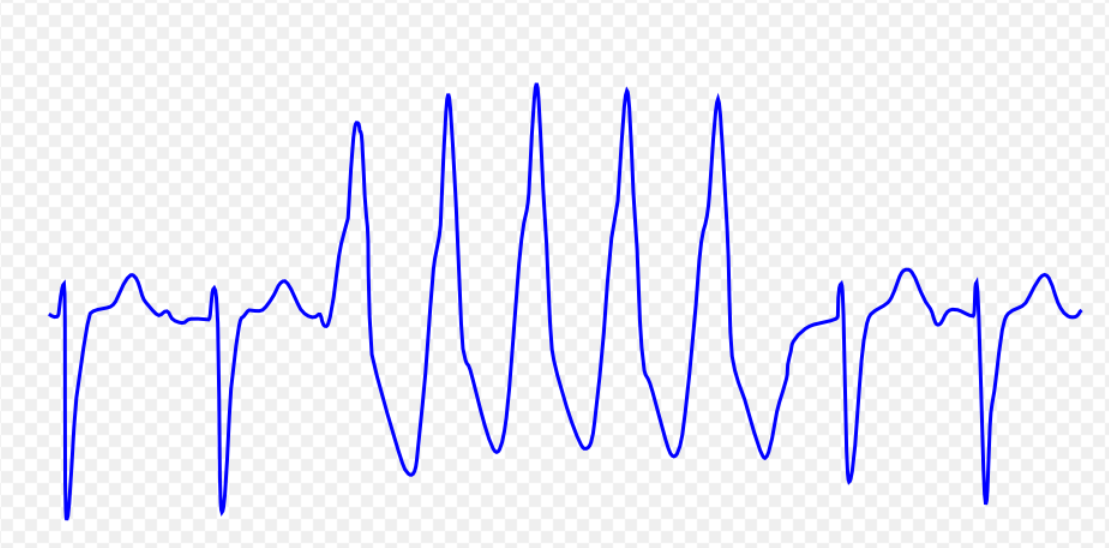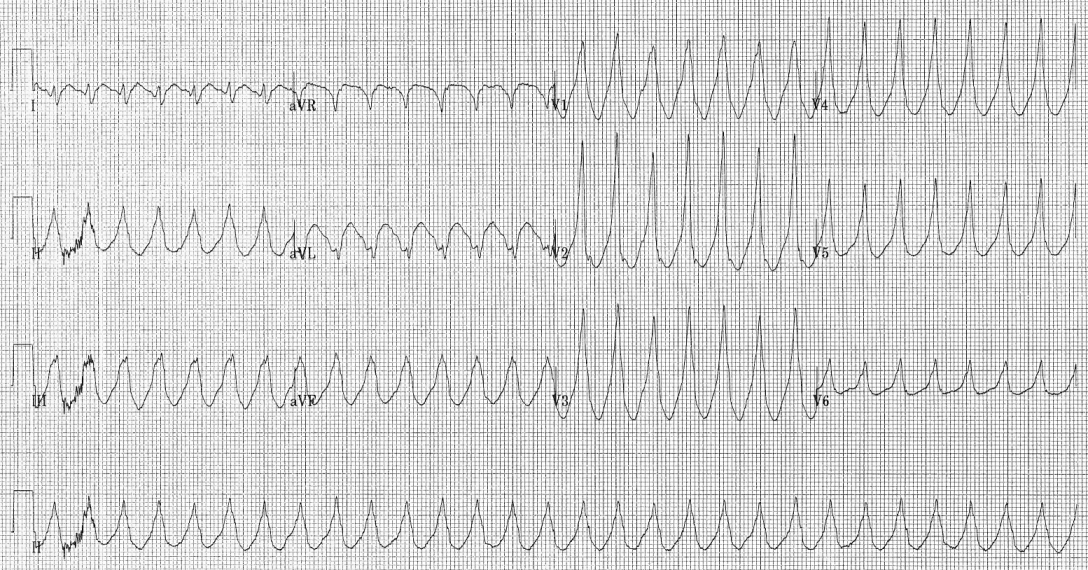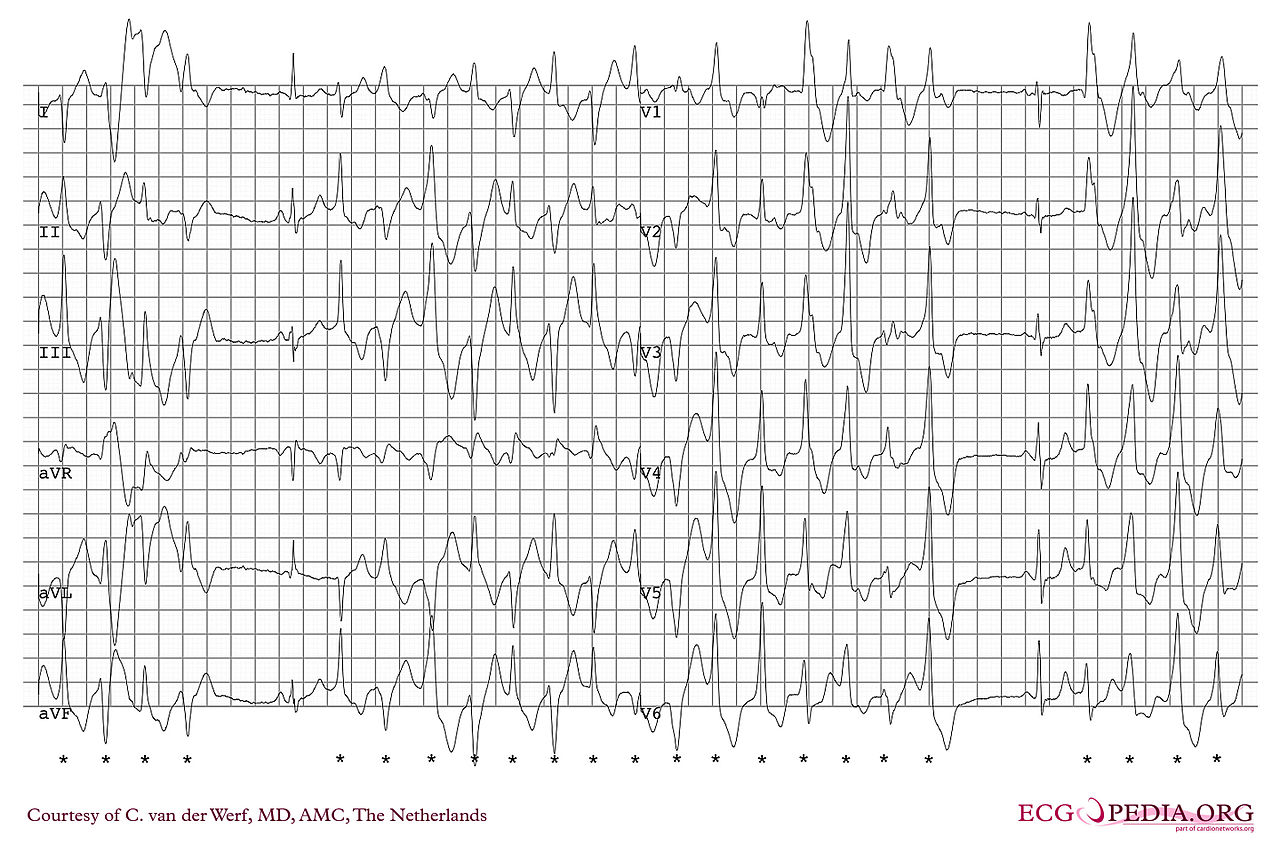Ventricular tachycardia classification: Difference between revisions
| Line 4: | Line 4: | ||
==Overview== | ==Overview== | ||
[[Ventricular tachycardia]] refers to a [[rhythm]] with a [[heart rate]] in excess of 100 (and in some definitions 120) beats per minute that arises distal to the [[bundle of His]]. [[Ventricular tachycardia]] can be classified based on three main categories. Firstly, The [[morphology]] of the [[QRS complexes]] on the [[ECG]] ([[monomorphic ventricular tachycardia]] vs [[polymorphic ventricular tachycardia]]). Secondly, The duration of | [[Ventricular tachycardia]] refers to a [[rhythm]] with a [[heart rate]] in excess of 100 (and in some definitions 120) beats per minute that arises distal to the [[bundle of His]]. [[Ventricular tachycardia]] can be classified based on three main categories. Firstly, The [[morphology]] of the [[QRS complexes]] on the [[ECG]] ([[monomorphic ventricular tachycardia]] vs [[polymorphic ventricular tachycardia]]). Secondly, The duration of the episode. | ||
==Classification Based Upon Morphology of the QRS Complexes== | ==Classification Based Upon Morphology of the QRS Complexes== | ||
Revision as of 06:49, 21 May 2021
|
Ventricular tachycardia Microchapters |
|
Differentiating Ventricular Tachycardia from other Disorders |
|---|
|
Diagnosis |
|
Treatment |
|
Case Studies |
|
Ventricular tachycardia classification On the Web |
|
to Hospitals Treating Ventricular tachycardia classification |
|
Risk calculators and risk factors for Ventricular tachycardia classification |
Editor-In-Chief: C. Michael Gibson, M.S., M.D. [1]; Associate Editor-In-Chief: Sara Zand, M.D.[2] Cafer Zorkun, M.D., Ph.D. [3]
Overview
Ventricular tachycardia refers to a rhythm with a heart rate in excess of 100 (and in some definitions 120) beats per minute that arises distal to the bundle of His. Ventricular tachycardia can be classified based on three main categories. Firstly, The morphology of the QRS complexes on the ECG (monomorphic ventricular tachycardia vs polymorphic ventricular tachycardia). Secondly, The duration of the episode.
Classification Based Upon Morphology of the QRS Complexes
Classification of ventriculat arrhythmia:
| Term | Definition | Feature | |
|---|---|---|---|
| Ventricular tachycardia[1] | Presence of ≥ 3 consecutive premature ventricular complexes with the rate of >100 beats per minute or cycle length< 600 ms |  |
|
| Sustained VT |
|
||
| Nonsustained, or unsustained VT |
|
||
| Monomorphic VT |
|
||
| Polymorphic VT | |||
| Bidirectional VT |
|
||
| Torsades de pointes |
|
 |
|
| Ventricular flutter |
|
 |
|
| Ventricular fibrillation |
|
 |
|
| VT, VF storm |
References
- ↑ "ACC/AHA/HRS 2006 Key Data Elements and Definitions for Electrophysiological Studies and Procedures". Circulation. 114 (23): 2534–2570. 2006. doi:10.1161/CIRCULATIONAHA.106.180199. ISSN 0009-7322.
- ↑ ECG found in of https://en.ecgpedia.org/index.php?title=Main_Page
- ↑ ECG found in https://en.ecgpedia.org/index.php?title=Main_Page
- ↑ ECG found in https://en.ecgpedia.org/index.php?title=Main_Page
- ↑ ECG found in https://en.ecgpedia.org/index.php?title=Main_Page

